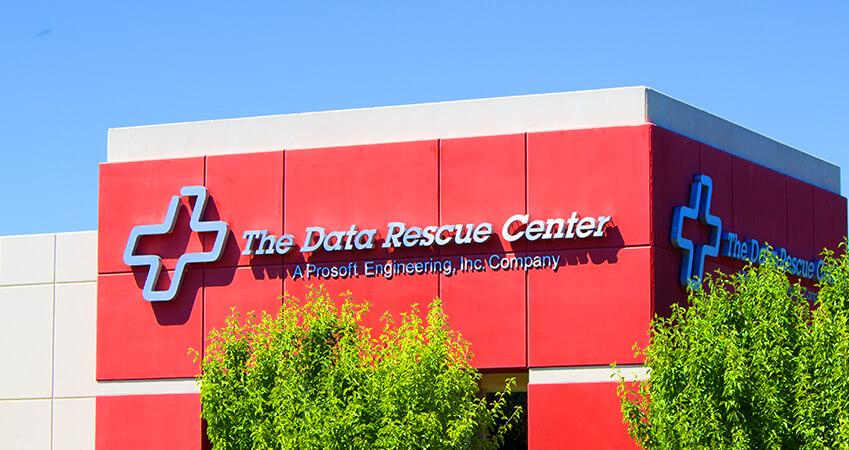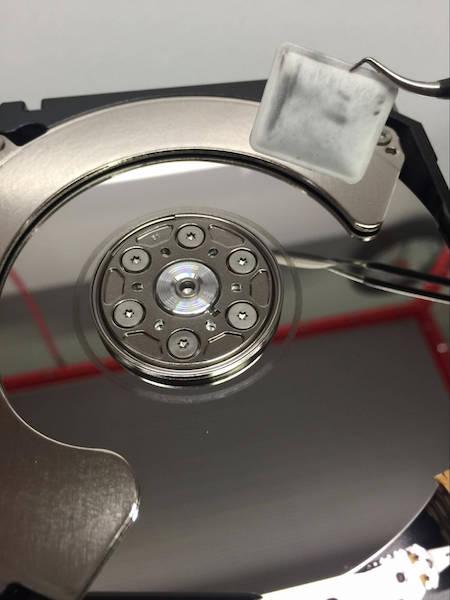Emergency Data Recovery

There are many scenarios in which emergency recovery from a damaged hard drive or storage device may be necessary. This could include a device damaged by fire or water, or it could be as simple as a physically failing server or device that is critical to a business’ operations, making it a time-sensitive matter to get the data recovered. No matter the situation, The Data Rescue Center can help with an expedited or emergency diagnosis and recovery procedure to suit your needs.
Common Signs and Causes of Physical Damage

There are many common indicators that a drive may be suffering from physical failure. These include:
A drive randomly or periodically disconnecting from the system
A drive that operates very slowly
A drive that does not mount to the computer (it does not appear when plugged in)
A drive hangs or freezes while reading or writing data
Clicking or beeping sounds coming from the drive
Scraping, grinding, or buzzing sounds coming from the drive
The drive does not spin when connected to the computer or power source
Burn marks or burning odor coming from the drive
A hard drive or other type of storage device can begin to fail for a variety of reasons. Here are some common failure scenarios and their causes:
Failed or shorted external enclosure, adapter, or circuit board damage. These can be caused as the result of power surges, improper use of cables, or improper use of a power supply.
Read/write head failure such as degraded, damaged, mangled, stuck heads, or spindle failure where the spindle is degraded, damaged, or seized. Causes of these failures include long-term regular use, manufacturing defects, or physical impact damage such as being dropped or bumped.
Degraded or bad blocks, which can occur as the result of long-term use or manufacturing defects.
Fire and Water Damage
There are a number of ways that a storage device can suffer from fire or water damage. Natural disasters can result in data loss through damage to hardware equipment, with events like storms, hurricanes, and flooding bringing massive amounts of water that can impact both home computers and servers at businesses and data centers. Even events as simple as broken plumbing can lead to similar outcomes. This may lead to one (or potentially many) water damaged drives in need of recovery.
Structural fires at a home or business can lead to fire damaged drives in need of special recovery procedures in a cleanroom lab environment. Even if the drive looks to be destroyed from the flames, there is still a possibility to recover the data depending on the severity of damage.
Whether you have a fire damaged storage device, wet hard drive, or failing RAID array, The Data Rescue Center has the tools to evaluate your case and develop a plan for recovery in these emergency scenarios.
What to Do When Your Device Shows Signs of Failure
If your device has shown signs of failure or you know it has been damaged, the first thing you should do is power off the device to prevent any further damage from occurring. Failing to do so could result in the device being more difficult to recover from (or potentially being unrecoverable) as the issue becomes increasingly severe.
Next, you will want to prepare the device for shipment to our recovery facility. We provide inbound shipping labels for standard shipping speed at no cost to you. However, if you require faster shipping for an emergency situation, you will need to cover the cost of shipping. If you a have a device with multiple drives such as a RAID, we will need all drives (as well as the enclosure) for diagnosis. You will want to remove the drives from the enclosure and individually secure them for shipment, as they can suffer damage if the enclosure is shipped with the drives still inside it. For more information on safely packaging your device so that it does not suffer further damage in shipment, please visit our shipping page.
Expedited and Emergency Evaluation
Once your damaged device has arrived at our facility it will undergo the evaluation process. This involves our technicians analyzing your drive, after which they will write a diagnosis detailing the specific failure scenario of your device, and will also include a quote for your recovery.
Typically the Standard evaluation is free and takes 1-2 business days, however we understand the need for a shorter timeframe in critical or emergency situations. To accommodate this we offer several additional options for faster evaluation. An Expedited evaluation will be completed on the same business day the device arrives at our facility, and is provided for a $200 evaluation fee. An Emergency evaluation will be completed within 4 hours of the device arriving at our facility, and is provided for a $250 evaluation fee.
Our expedited and emergency evaluations are prioritized above all other evaluations to get you a detailed diagnosis and quote as soon as possible.
Expedited and Emergency Recovery
The quote you receive will indicate several different service levels that are available to you depending on your needs. A Standard recovery service level has an average completion time frame of 7-10 business days. For more time-sensitive cases, the Expedited recovery service level has a time frame of 3-5 business days for your data to be recovered. For the most critical of situations, our Emergency recovery service level has a time frame of 1-2 calendar days (including weekends and holidays) to ensure the fastest recovery possible.
Expedited and Emergency recoveries are prioritized over all other recovery cases at our facility to get your data returned to you as soon as possible. In terms of pricing, Standard service has a standard quoted price, expedited service is typically twice the cost of the standard quote, and emergency service is normally three times the cost of the standard quoted price.
While the Expedited and Emergency recovery service levels do have a higher cost associated with them, it is often less than what is lost by a business that is unable to function due to its computer or servers being out of commission for extended periods of time.
Summary
There are many signs that your storage device may be failing, such as: slow drive access, failure to mount, audible clicking or grinding noises coming from the drive, and more. There are a number of different causes for drive failure including: physical impact, power surges, normal wear and tear, and others. Devices may even be impacted by severe data disaster scenarios such as fire or water damage. Regardless of the failure scenario or severity of damage, The Data Rescue Center offers expedited and emergency recovery options to minimize downtime and get you back up and running as soon as possible.
About the Author
Ryan O.
My name is Ryan and I provide technical support and perform software testing for Prosoft Engineering, to ensure we provide customers with the best software experience possible. I also provide customer service for clients at The Data Rescue Center that have physically damaged devices. I enjoy helping customers maximize their chance of recovering and protecting their files, regardless of their potential data loss situation.